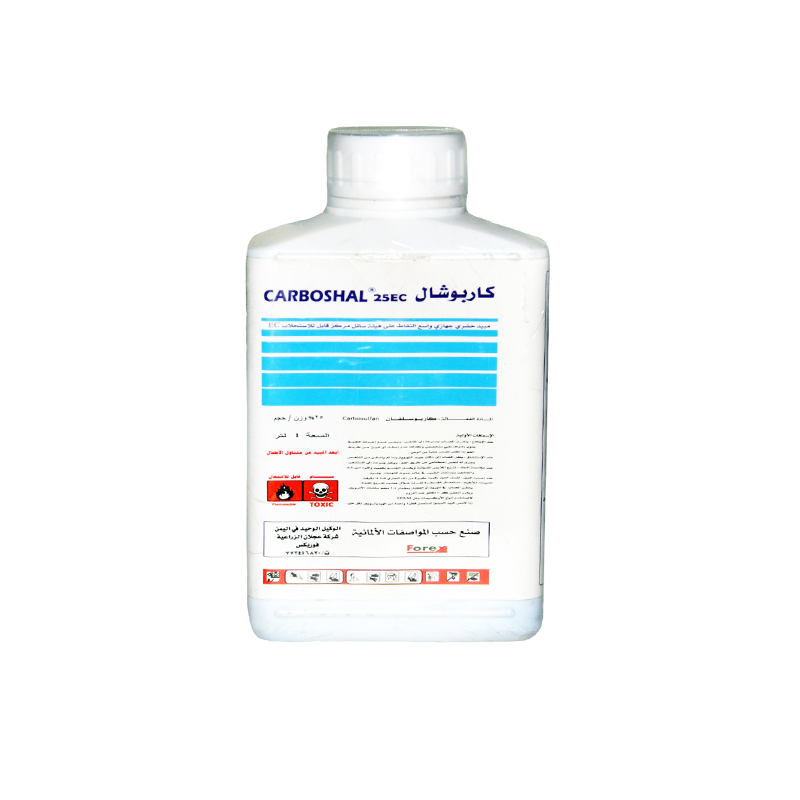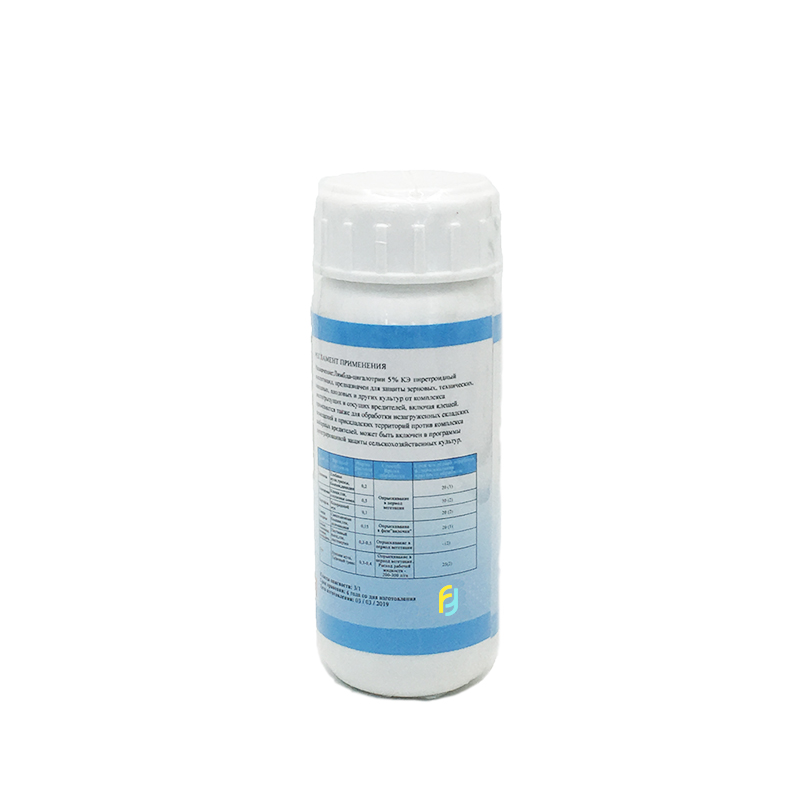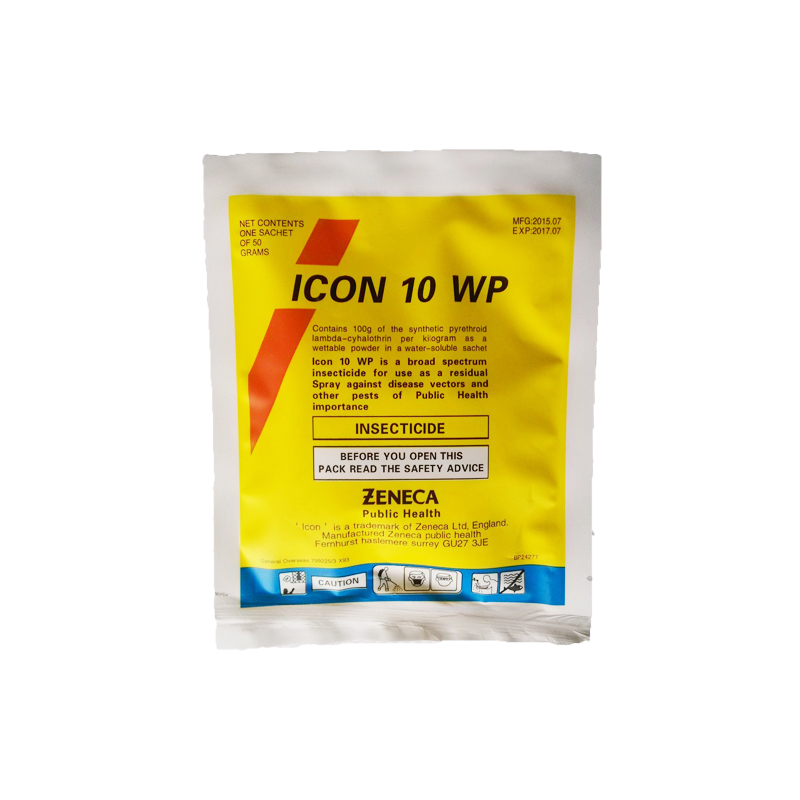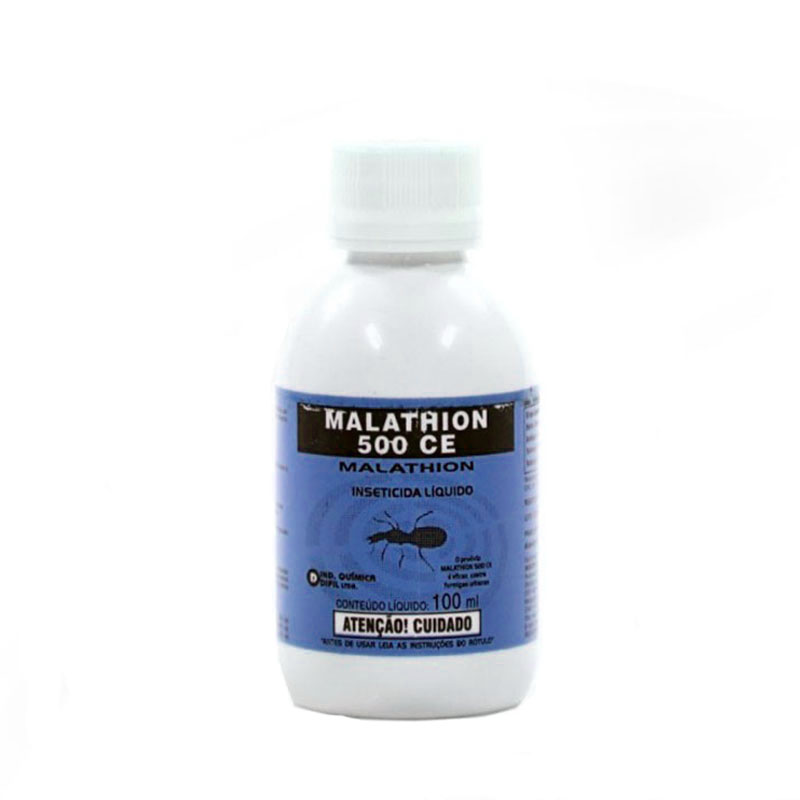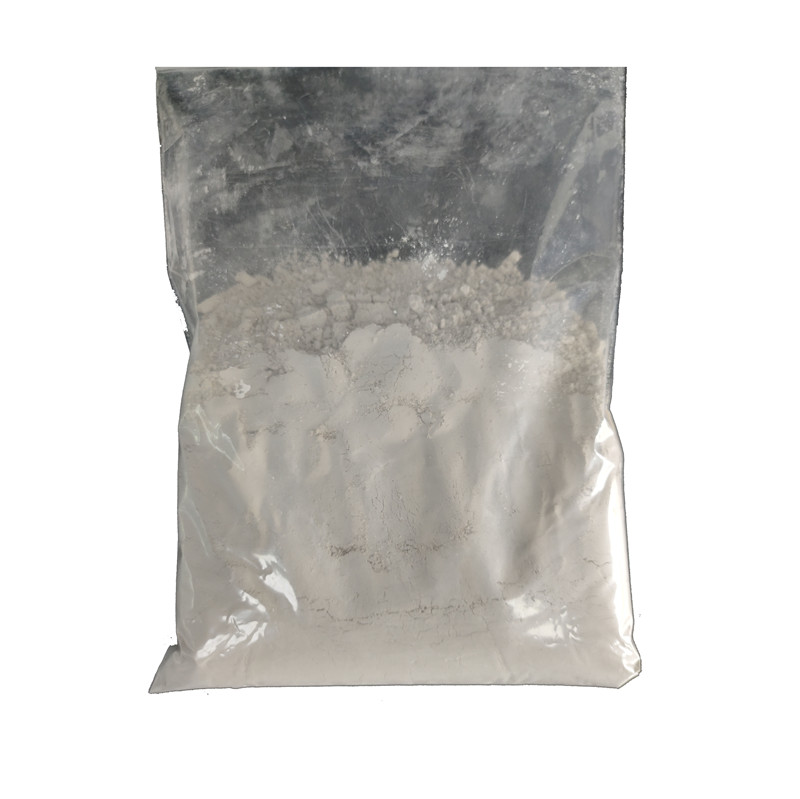Agrochemical effective insecticide lambda-cyhalothrin pesticide
Introduction
Lambda-cyhalothrin has a wide insecticidal spectrum, high activity and rapid efficiency. It is resistant to rain erosion after spraying, but it is easy to be resistant to it after long-term use. It has a certain control effect on pests and mites of thorn suction mouth parts, but the dosage of mites is 1-2 times higher than the conventional dosage.
It is suitable for pests of peanuts, soybeans, cotton, fruit trees and vegetables.
Common dosage forms include 2.5% EC, 5% EC, 10% WP, 15% WP, etc.
| Product name | Lambda-cyhalothrin |
| Other names | Cyhalothrin |
| Formulation and dosage | 2.5%EC, 5%EC, 10%WP, 25%WP |
| CAS No. | 91465-08-6 |
| Molecular formula | C23H19ClF3NO3 |
| Type | Insecticide |
| Toxicity | Low toxic |
| Shelf life | 2-3 years proper storage |
| sample | Free sample available |
| Mixed formulations | Lambda-cyhalothrin 106g/l + Thiamethoxam 141g/l SCLambda-cyhalothrin 5%+ Imidacloprid 10% SClambda-cyhalothrin 1%+ phoxim 25% EC |
| Place of origin | Hebei, China |
Application
2.1 To kill what pests?
Pyrethroid insecticides and acaricides with high efficiency, broad spectrum and quick effect are mainly contact and stomach toxicity, without internal absorption.
It has good effects on Lepidoptera, Coleoptera, Hemiptera and other pests, as well as leaf mites, rust mites, gall mites, tarsomedial mites, etc. when insects and mites are concurrent, it can control cotton bollworm, cotton bollworm, Pieris rapae, vegetable constrictor aphid, tea inchworm, tea caterpillar, tea orange gall mite, leaf gall mite, citrus leaf moth, orange aphid, citrus leaf mite, rust mite Peach fruit borer and pear fruit borer can also be used to control a variety of surface and public health pests. In order to prevent and control cotton bollworm and cotton bollworm, the second, third generation eggs were sprayed with 2.5% times of 1000~2000 times oil solution to treat red spider, bridging bug and cotton bug. The control of cabbage caterpillar and vegetable aphid were spray at 6 ~ 10mg/L and 6.25 ~ 12.5mg/L concentration respectively. Control of citrus leaf miner with spray of 4.2 ~ 6.2mg/L concentration.
2.2 To be used on what crops?
Used for wheat, corn, fruit trees, cotton, cruciferous vegetables, etc.
2.3 Dosage and usage
|
Formulations |
Crop names |
Control object |
Dosage |
Usage Method |
| 2.5%EC | cruciferous leafy vegetables | cabbage worm | 300-600 ml/ha | spray |
| cabbage | aphid | 300-450 ml/ha | spray | |
| wheat | aphid | 180-300 ml/ha | spray | |
| 5%EC | leafy vegetable | cabbage worm | 150-300 ml/ha | spray |
| cotton | bollworm | 300-450 ml/ha | spray | |
| cabbage | aphid | 225-450 ml/ha | spray | |
| 10%WP | cabbage | cabbage worm | 120-150 ml/ha | spray |
| Chinese cabbage | Cabbage worm | 120-165 ml/ha | spray | |
| Cruciferous vegetables | Cabbage worm | 120-150 g/ha | spray |
Features and effect
Cyhalothrin has the characteristics of efficacy, inhibits the conduction of insect nerve axons, and has the effects of avoiding, knocking down and poisoning insects. It has a wide insecticidal spectrum, high activity and rapid efficacy. It is resistant to rain erosion after spraying, but it is easy to be resistant to it after long-term use. It has a certain control effect on insect pests and mites of thorn suction mouthparts, and the action mechanism is the same as Fenvalerate and fenpropathrin. The difference is that it has a good inhibitory effect on mites. When it is used in the early stage of mite occurrence, it can inhibit the increase of mite number. When mites have occurred in large quantities, its number can not be controlled. Therefore, it can only be used for both insect and mite treatment, not for special acaricide.



